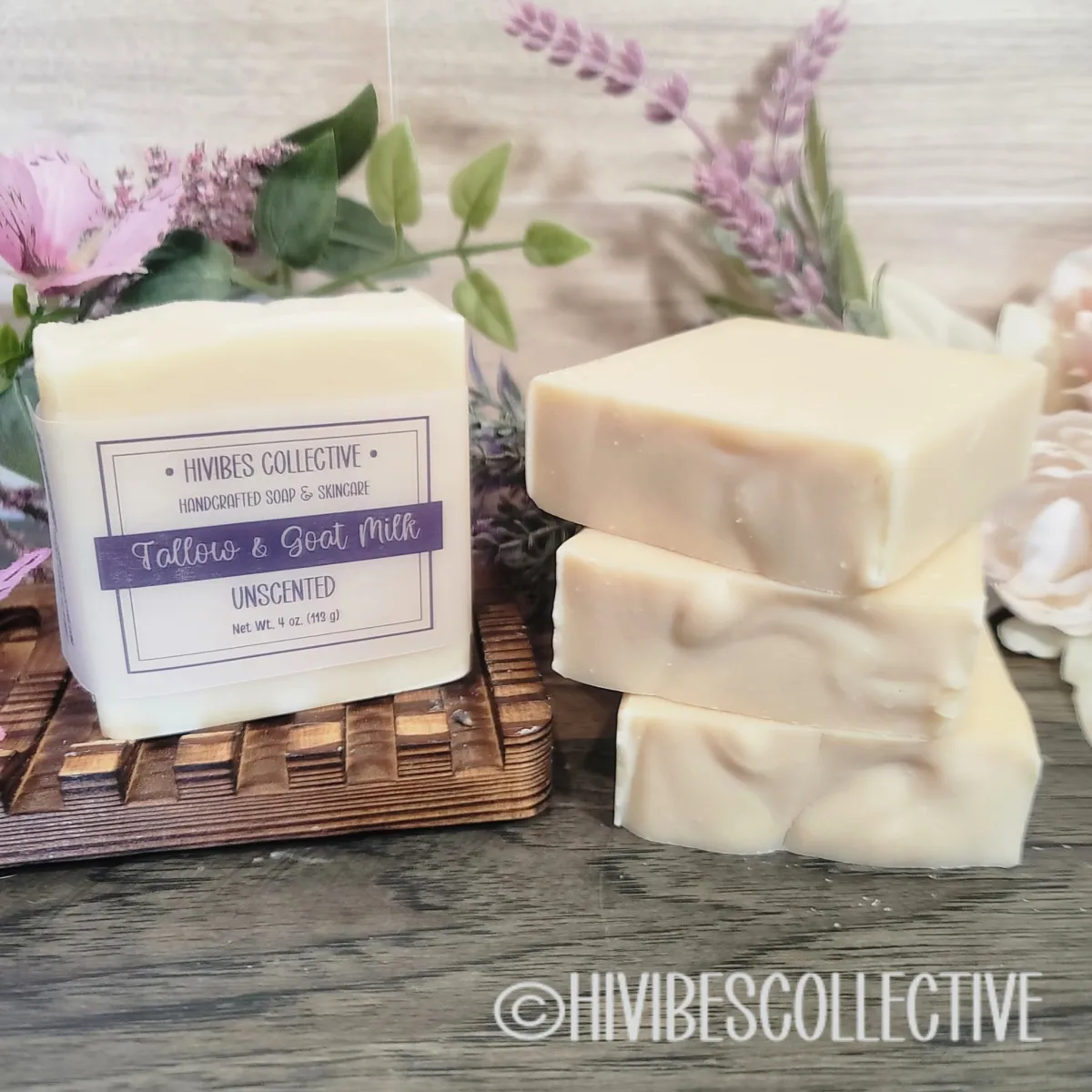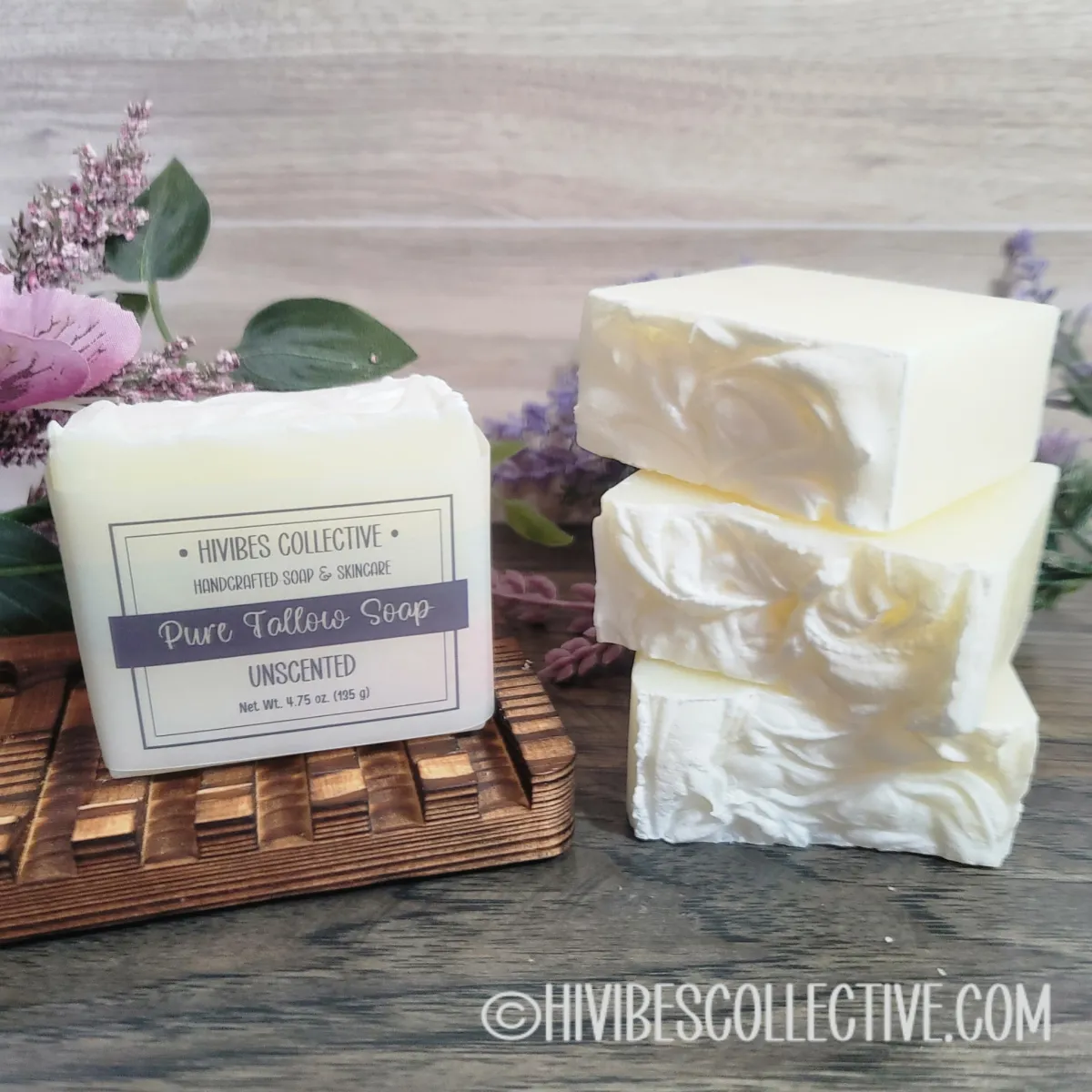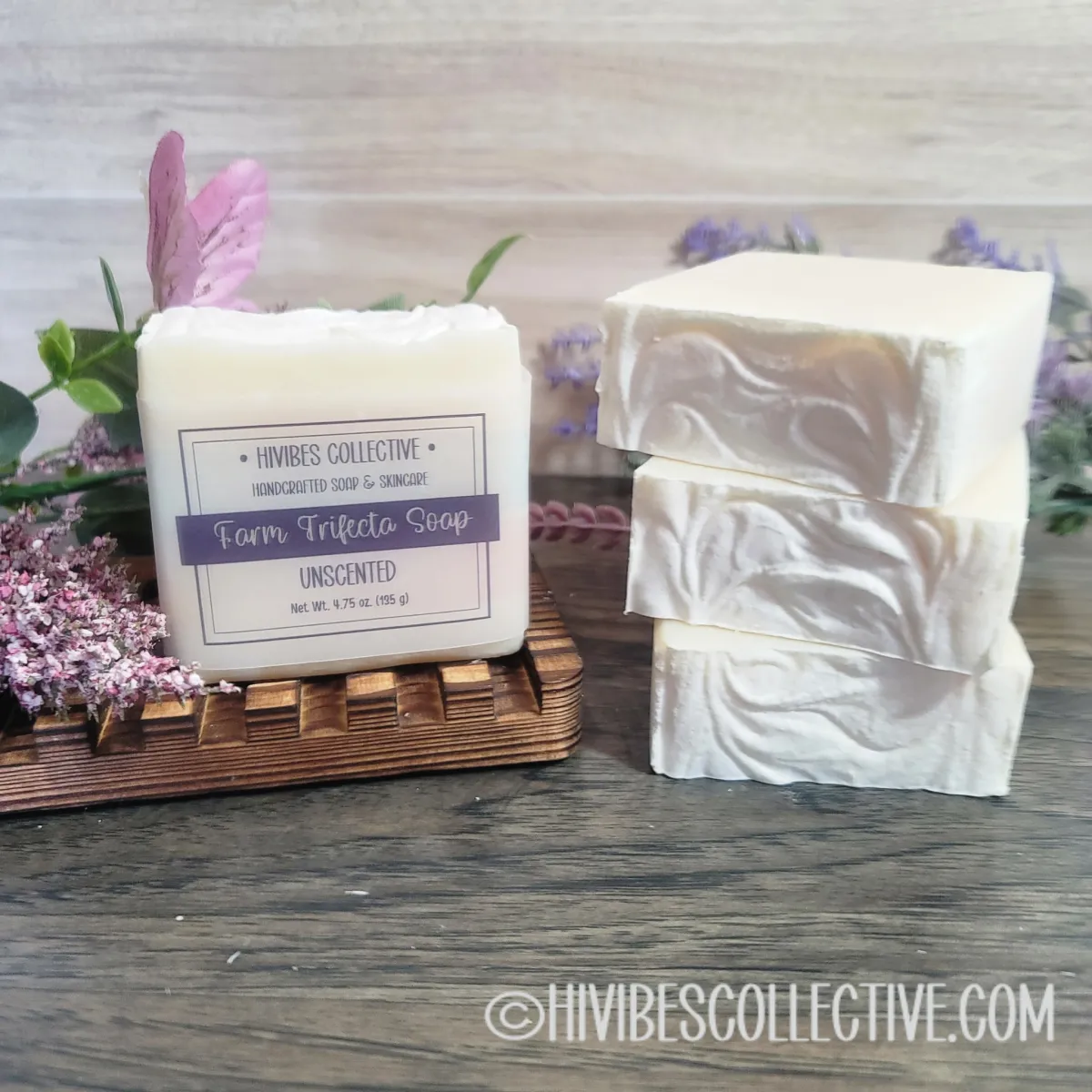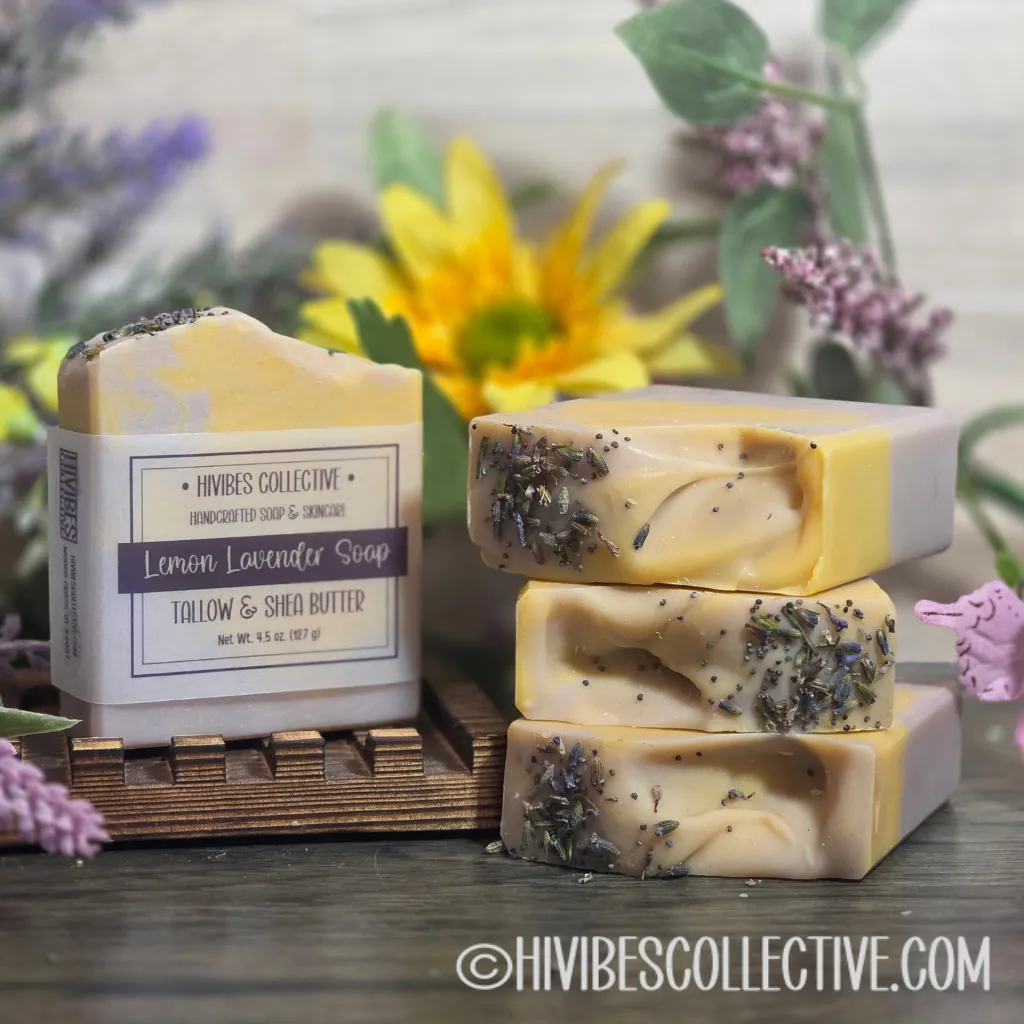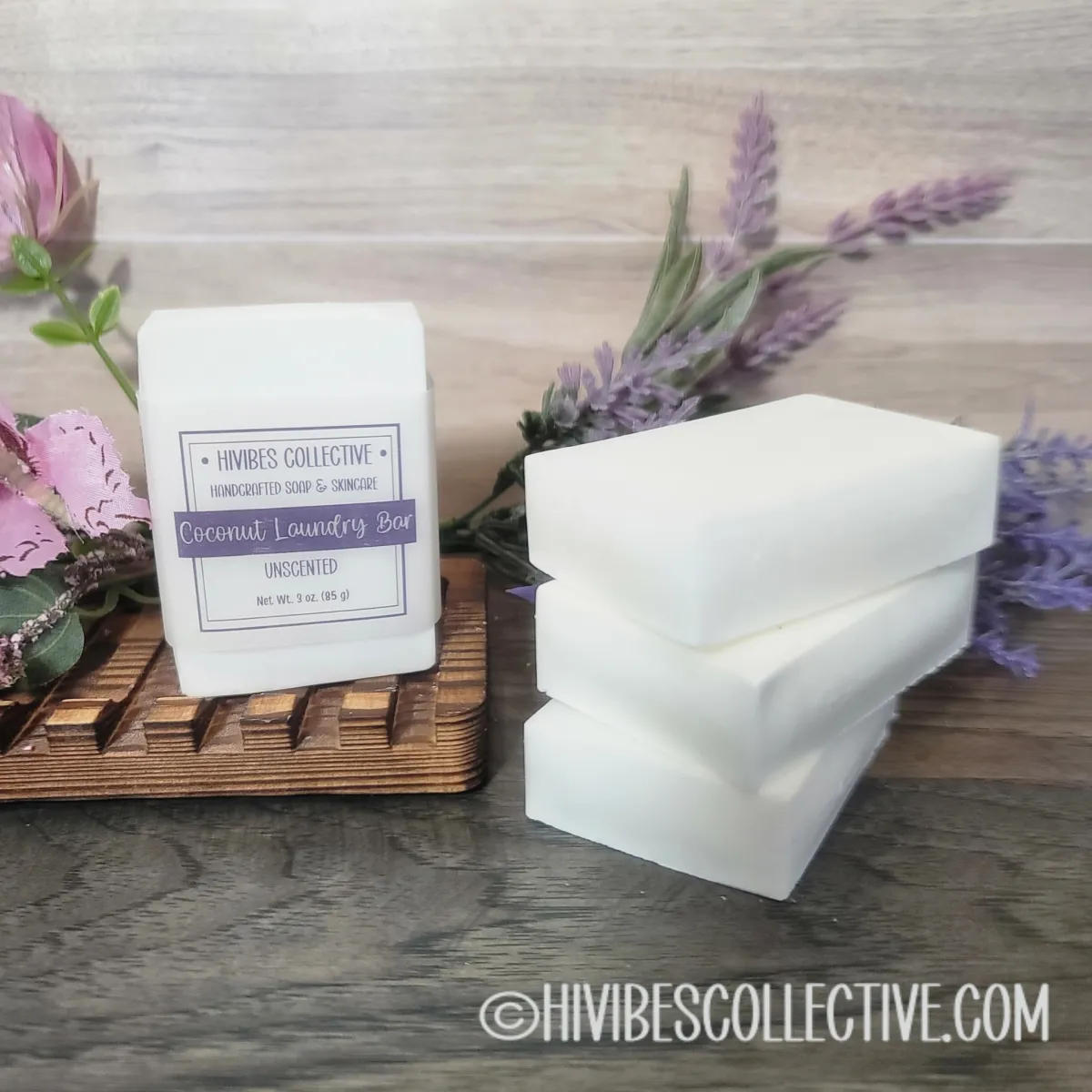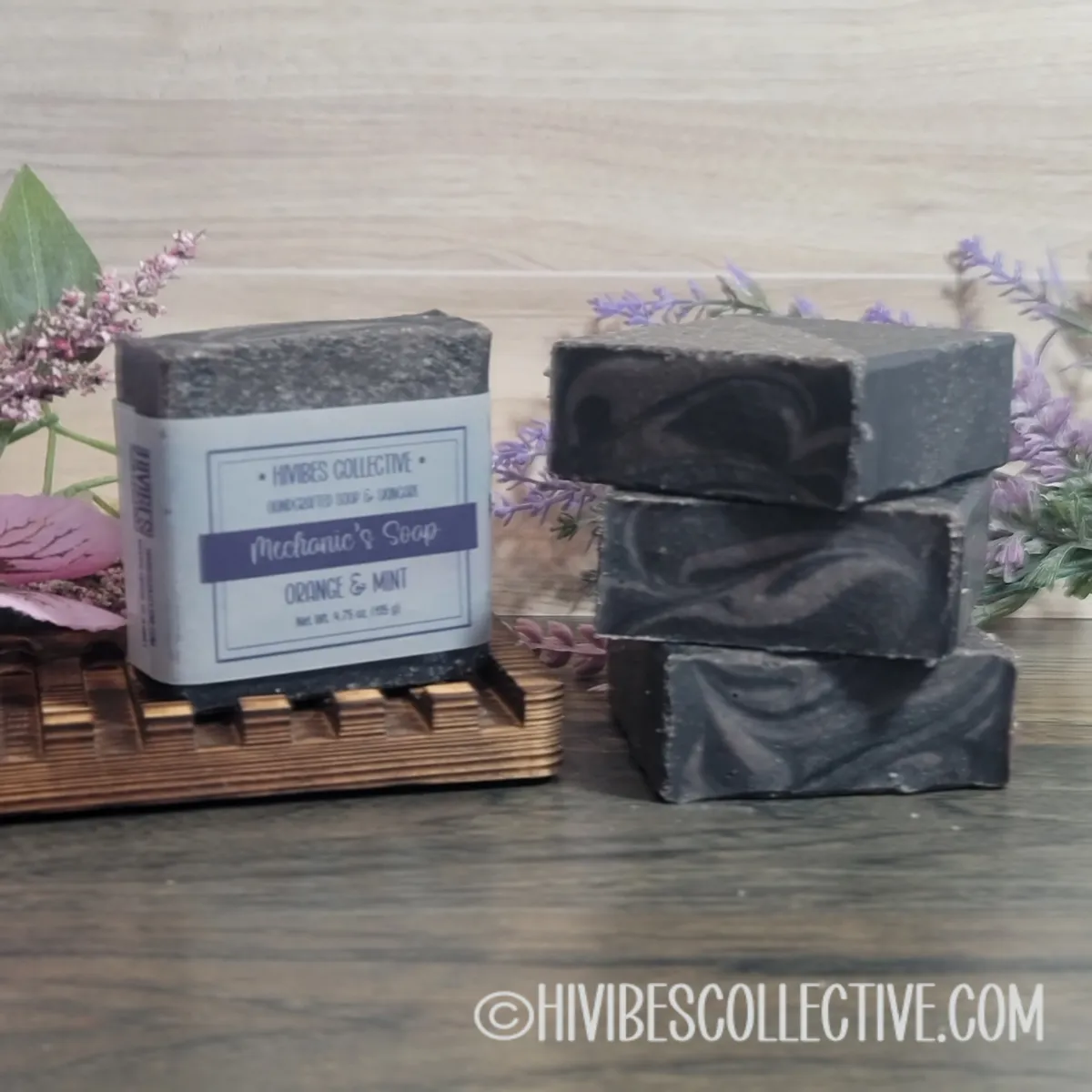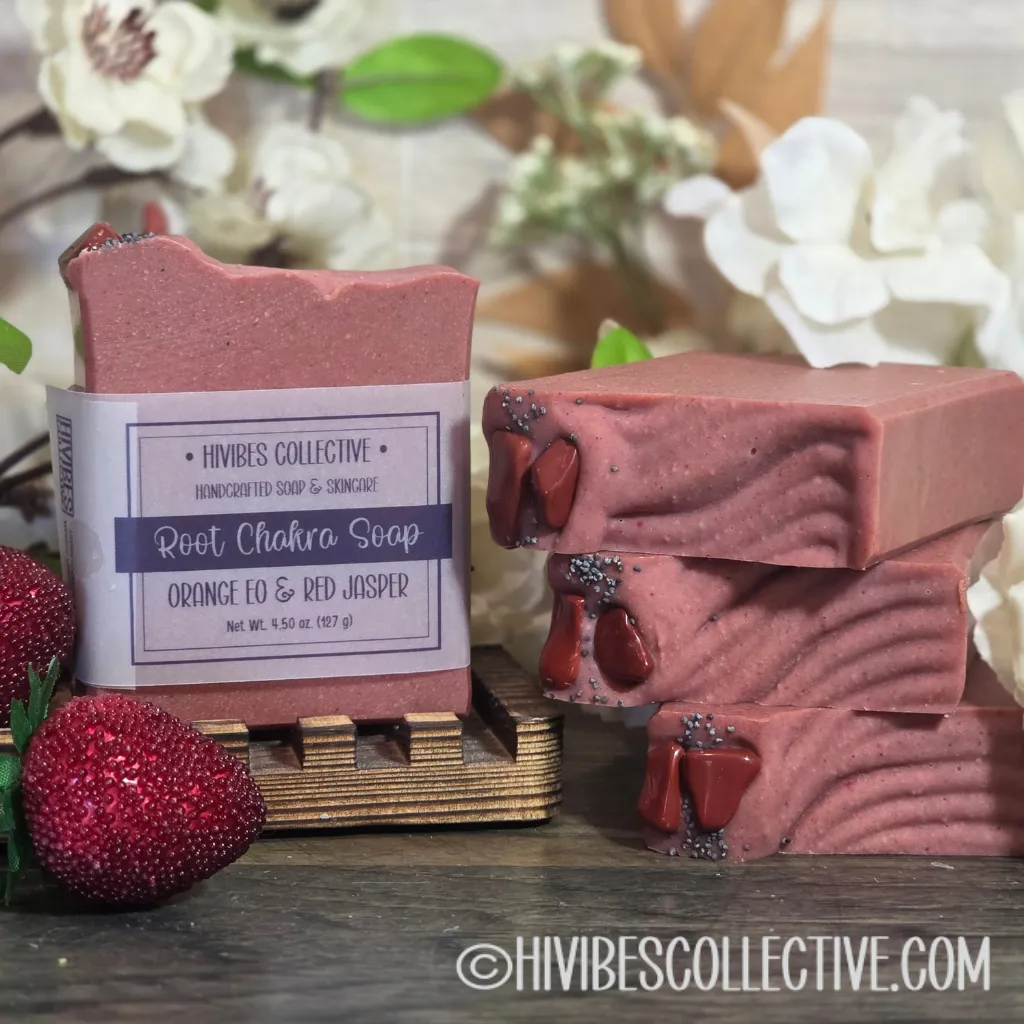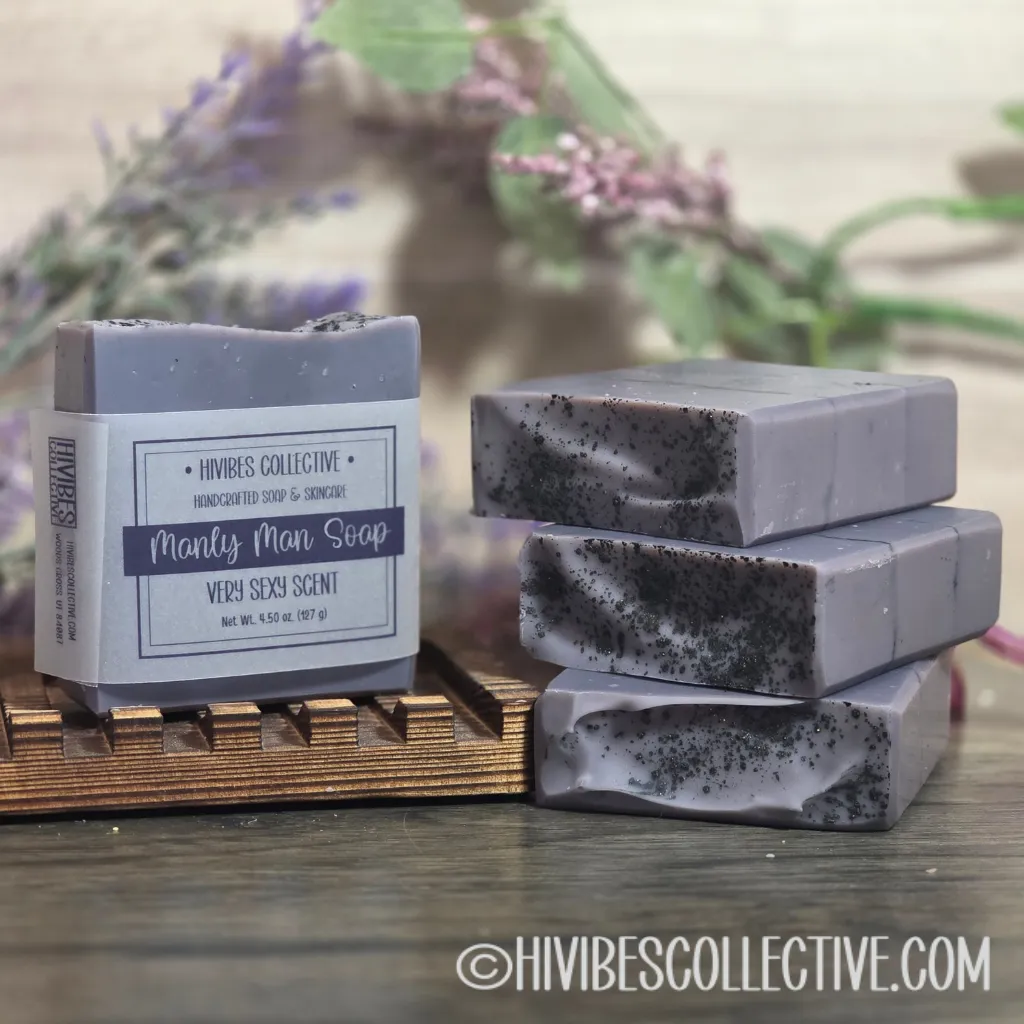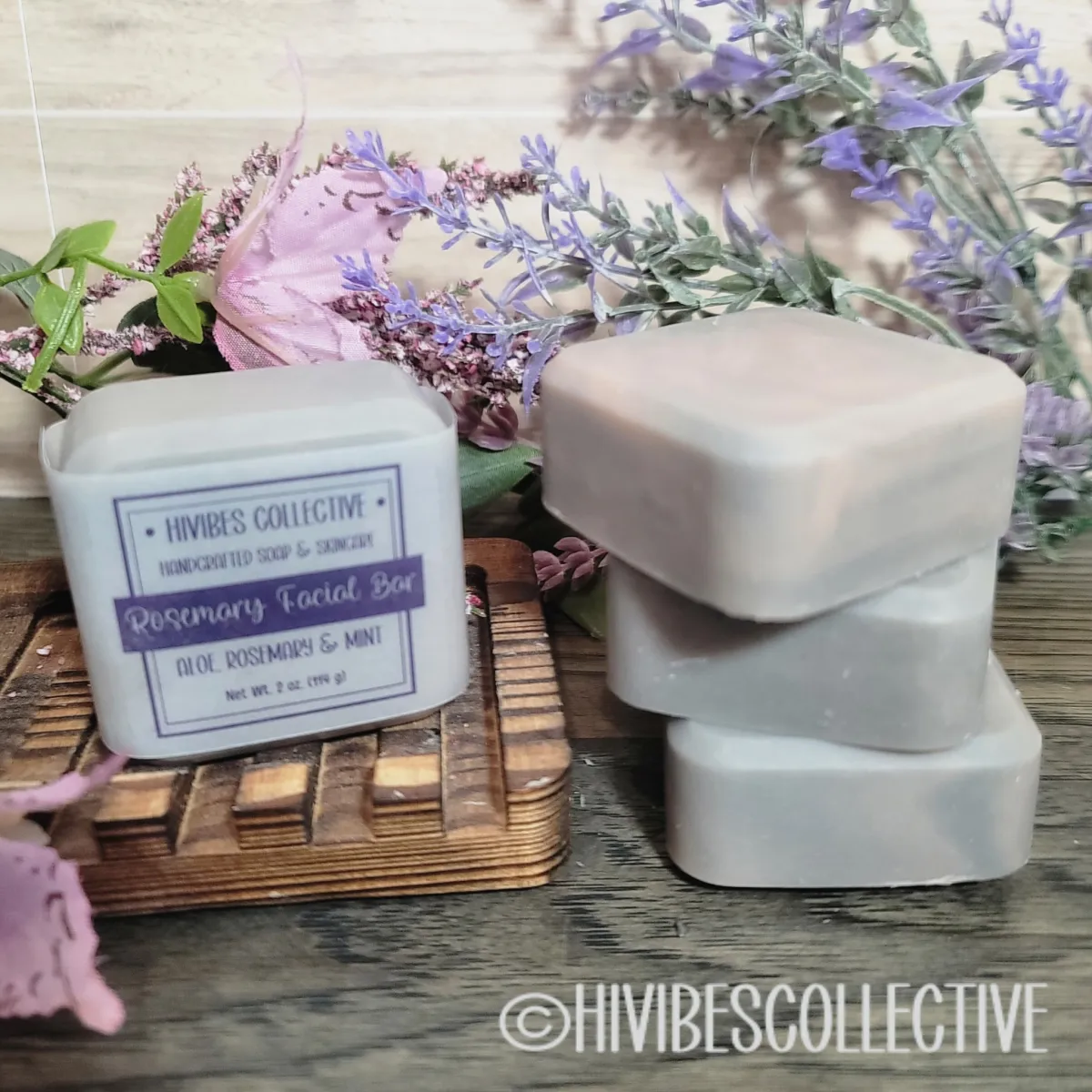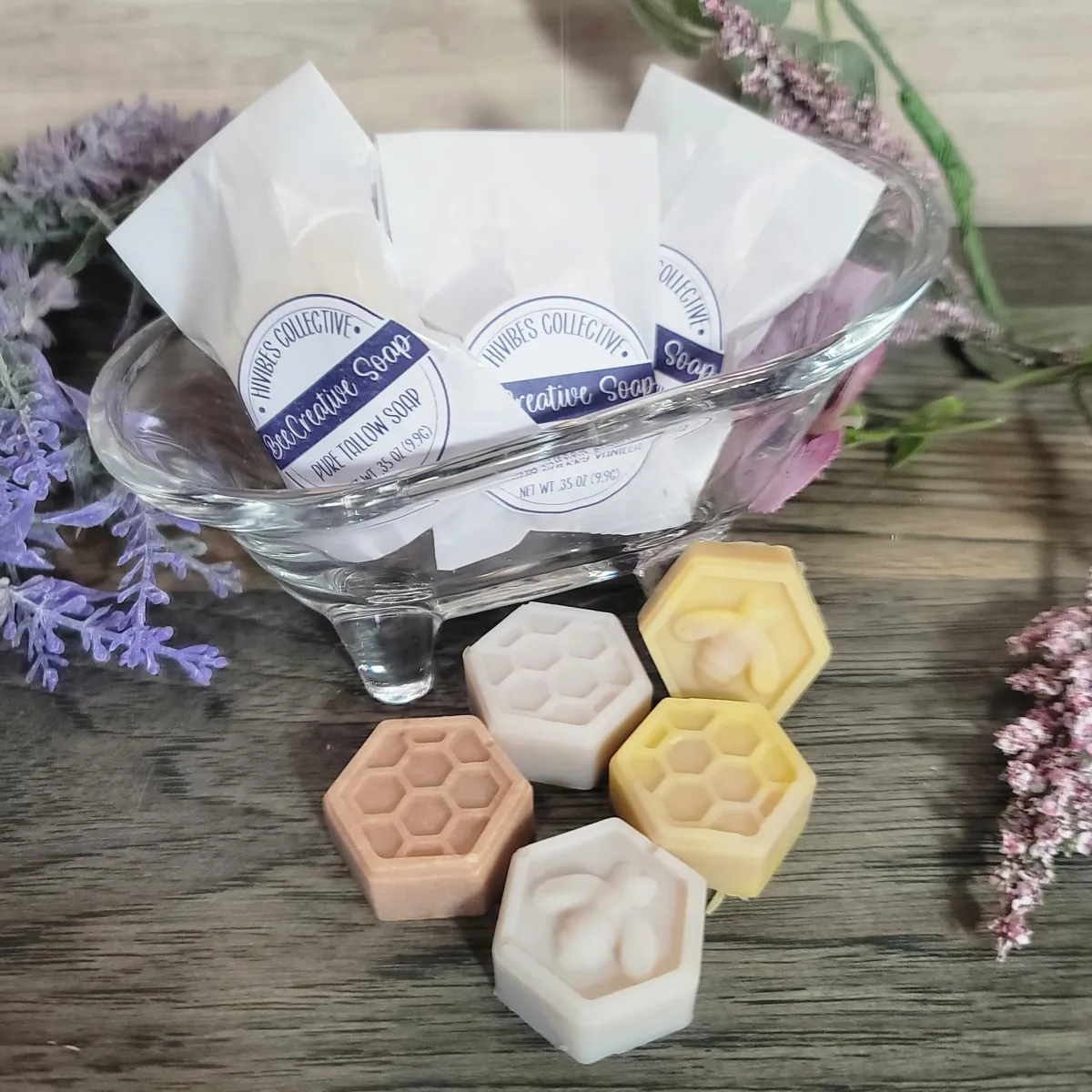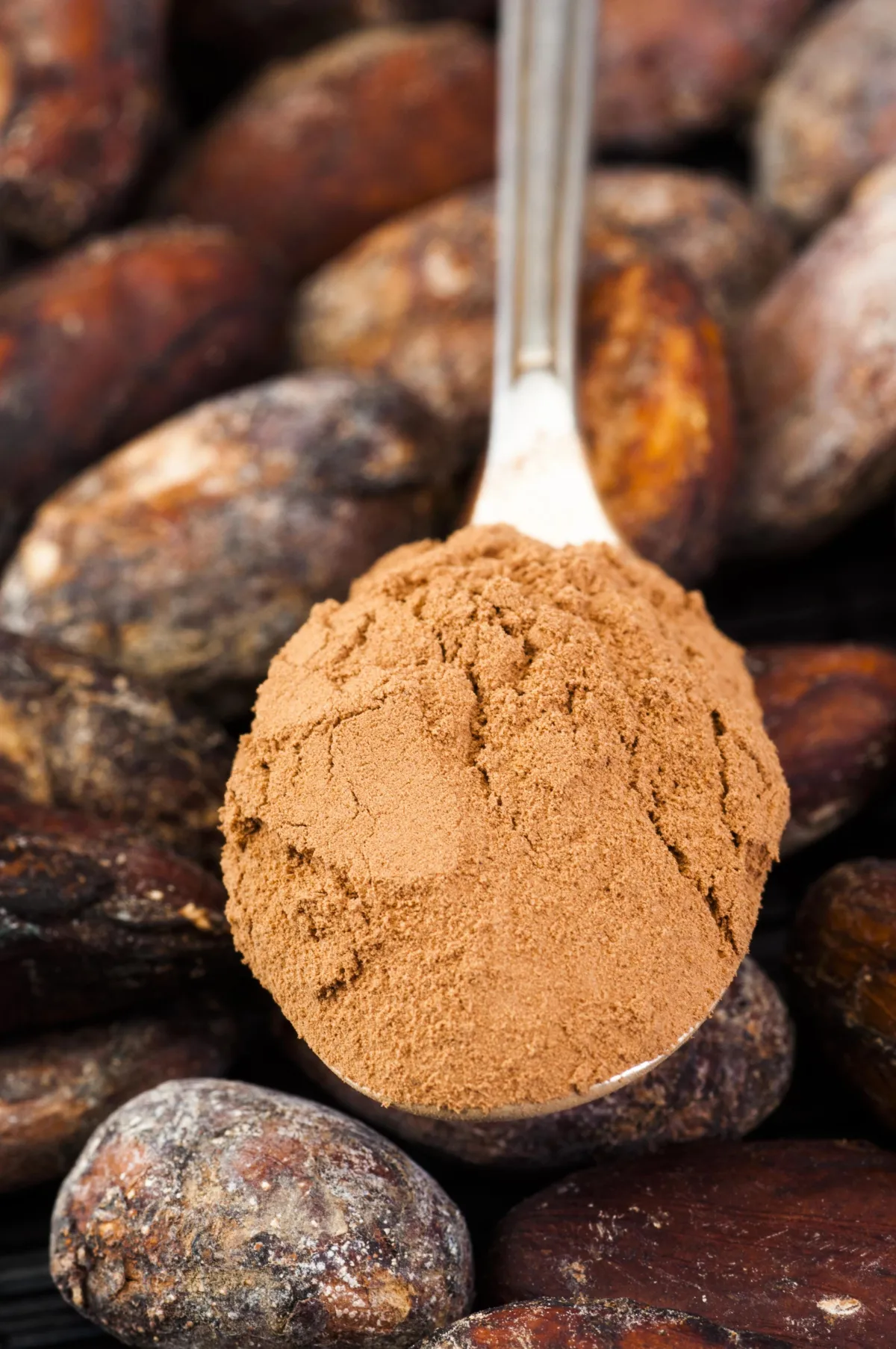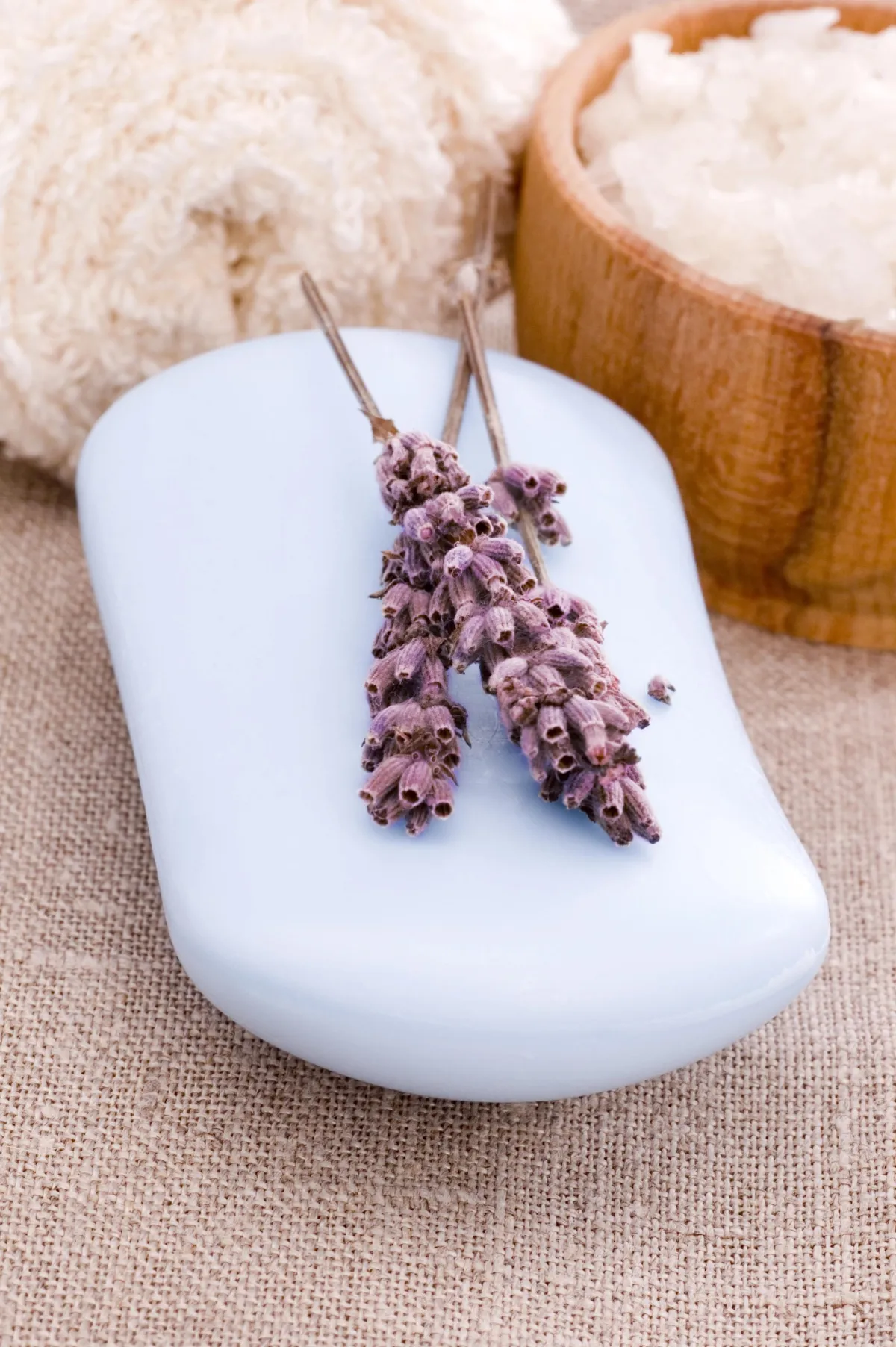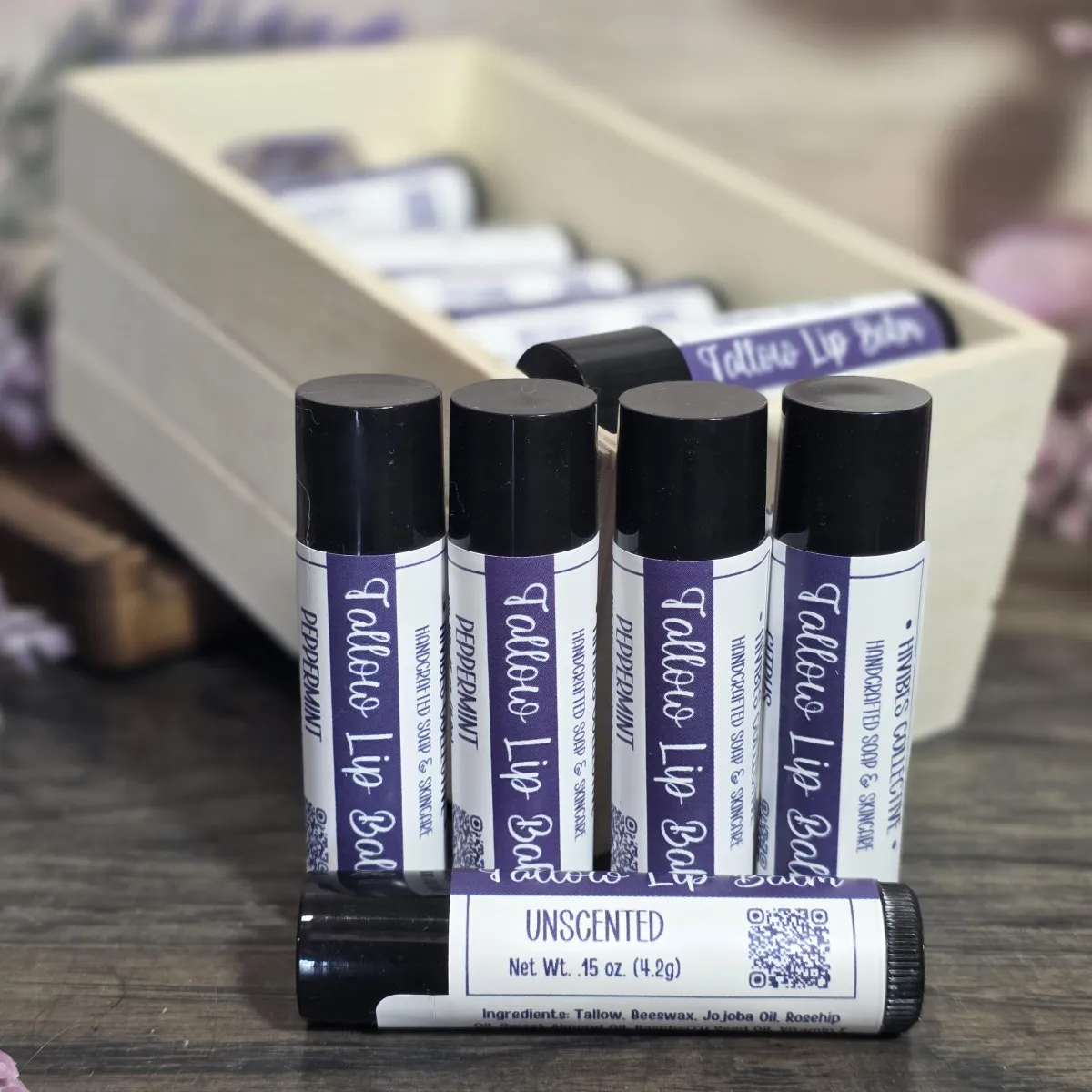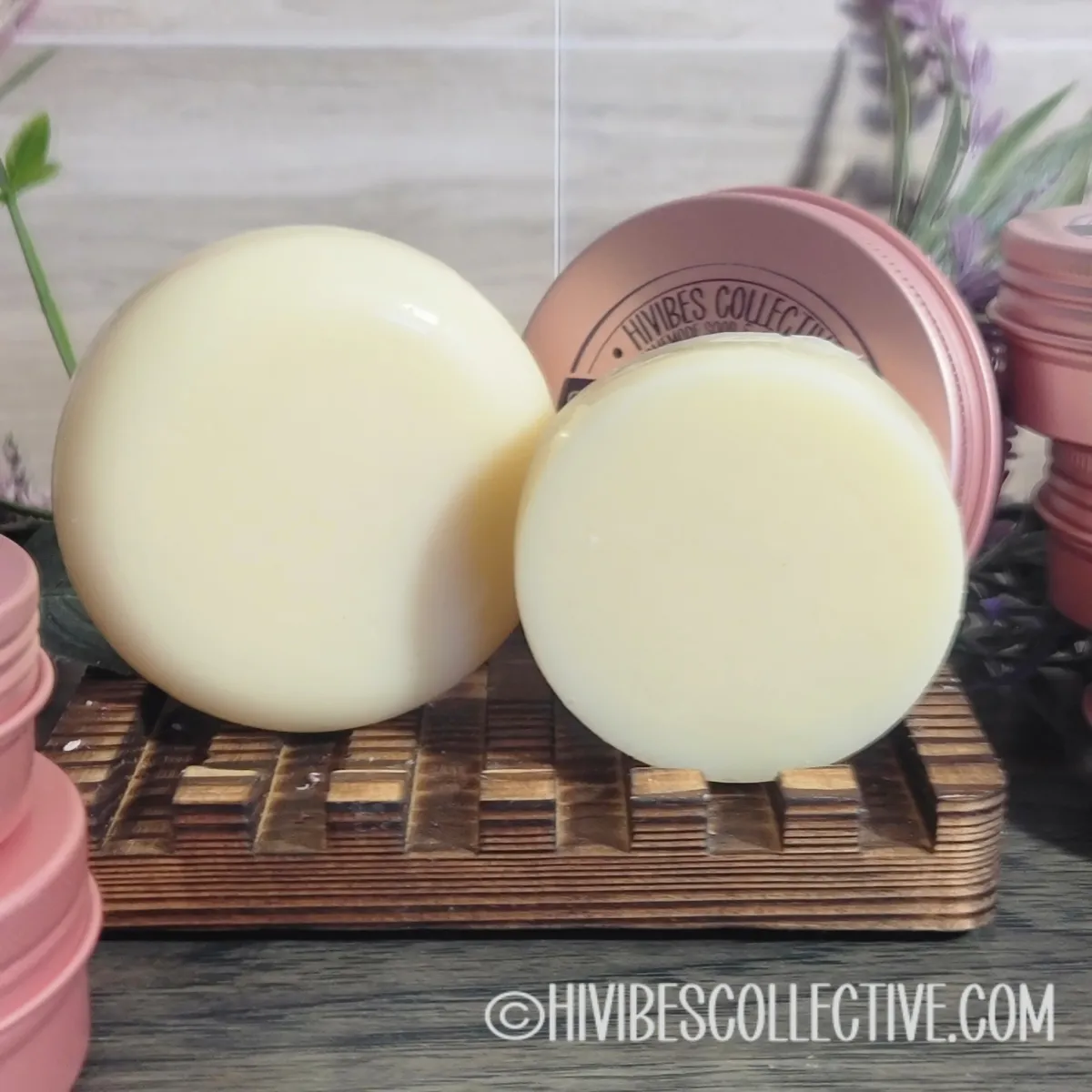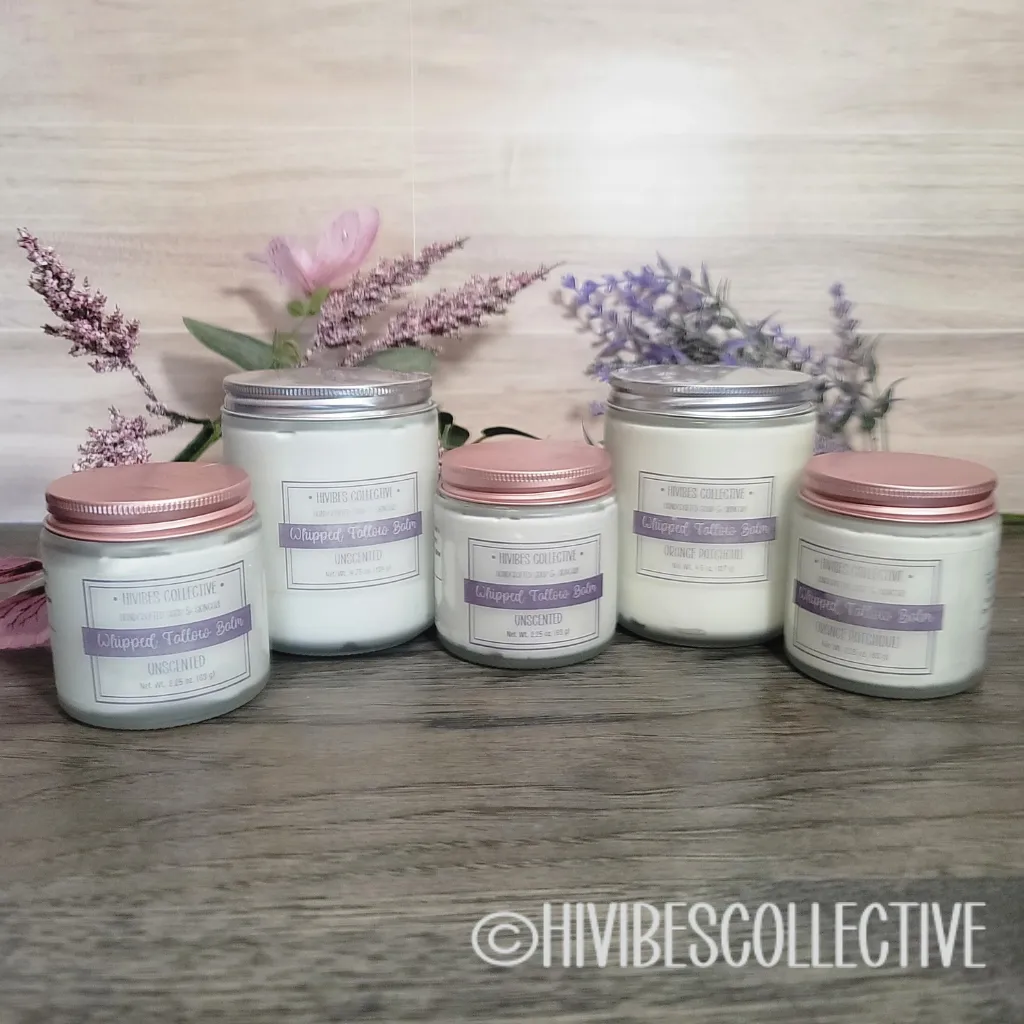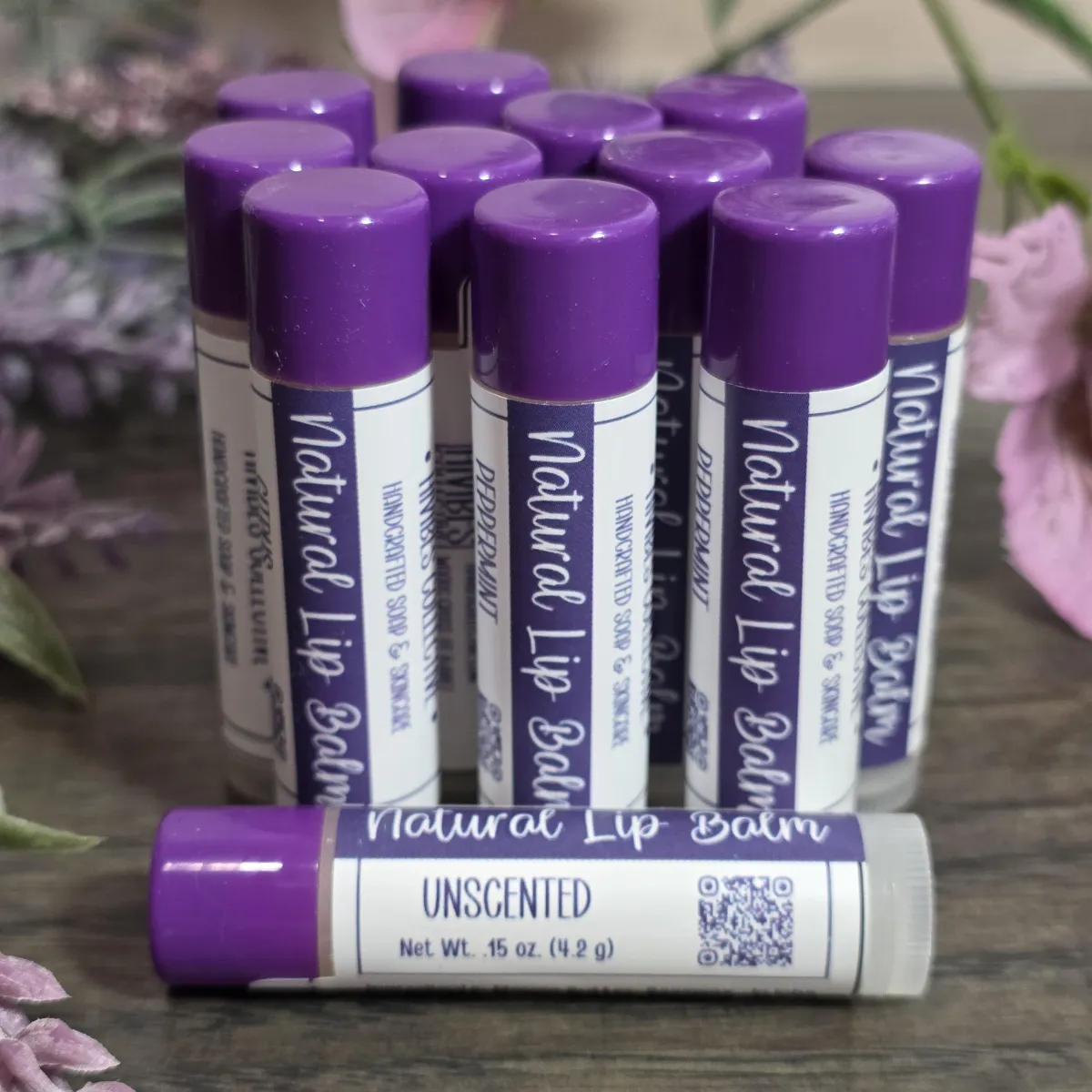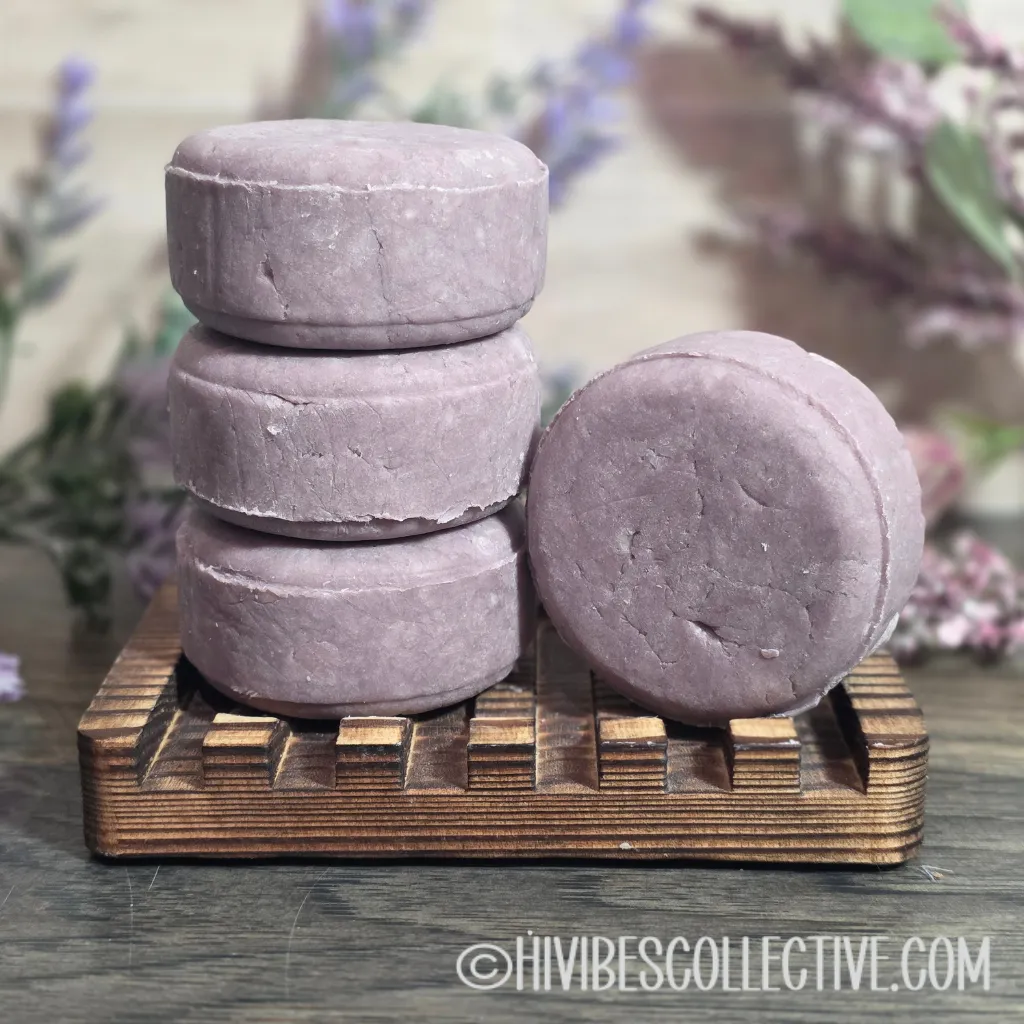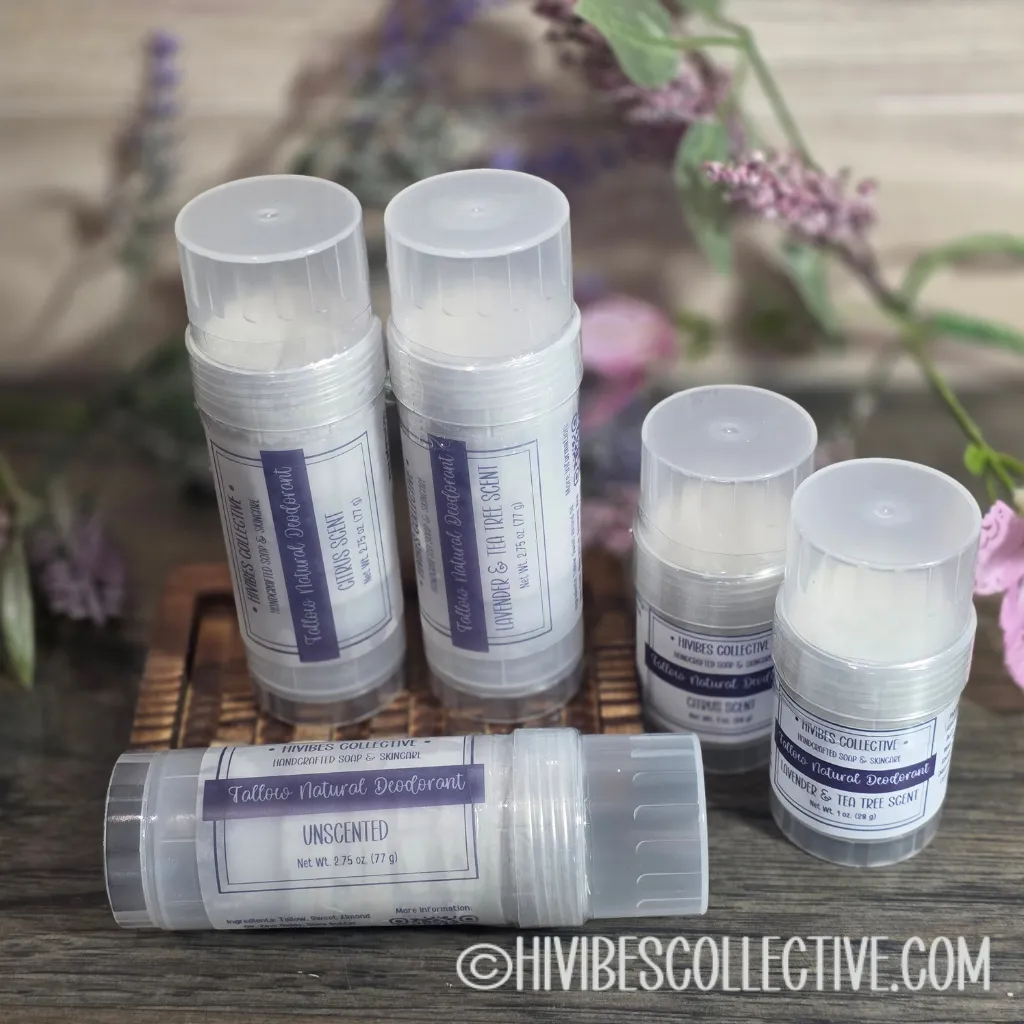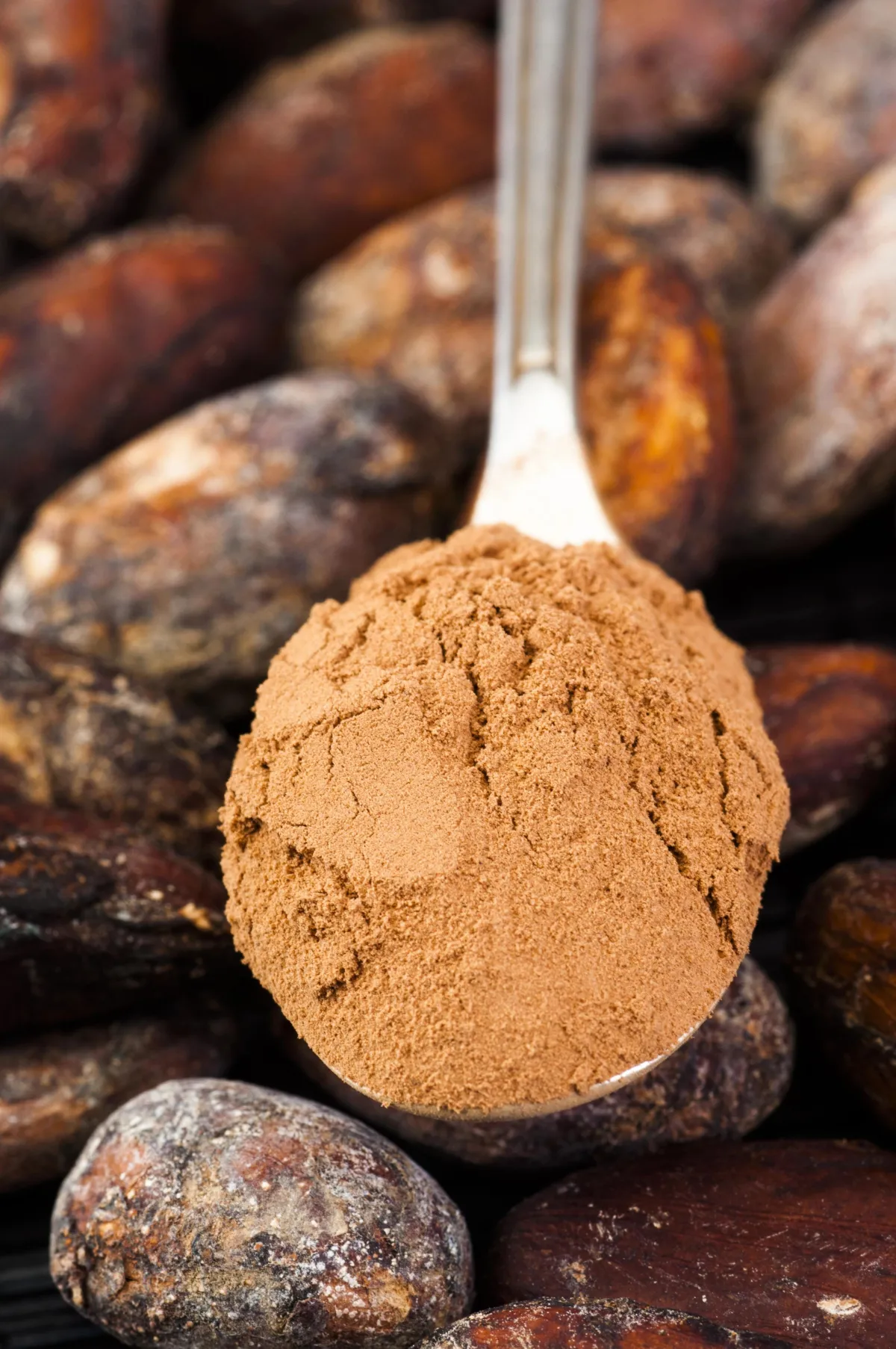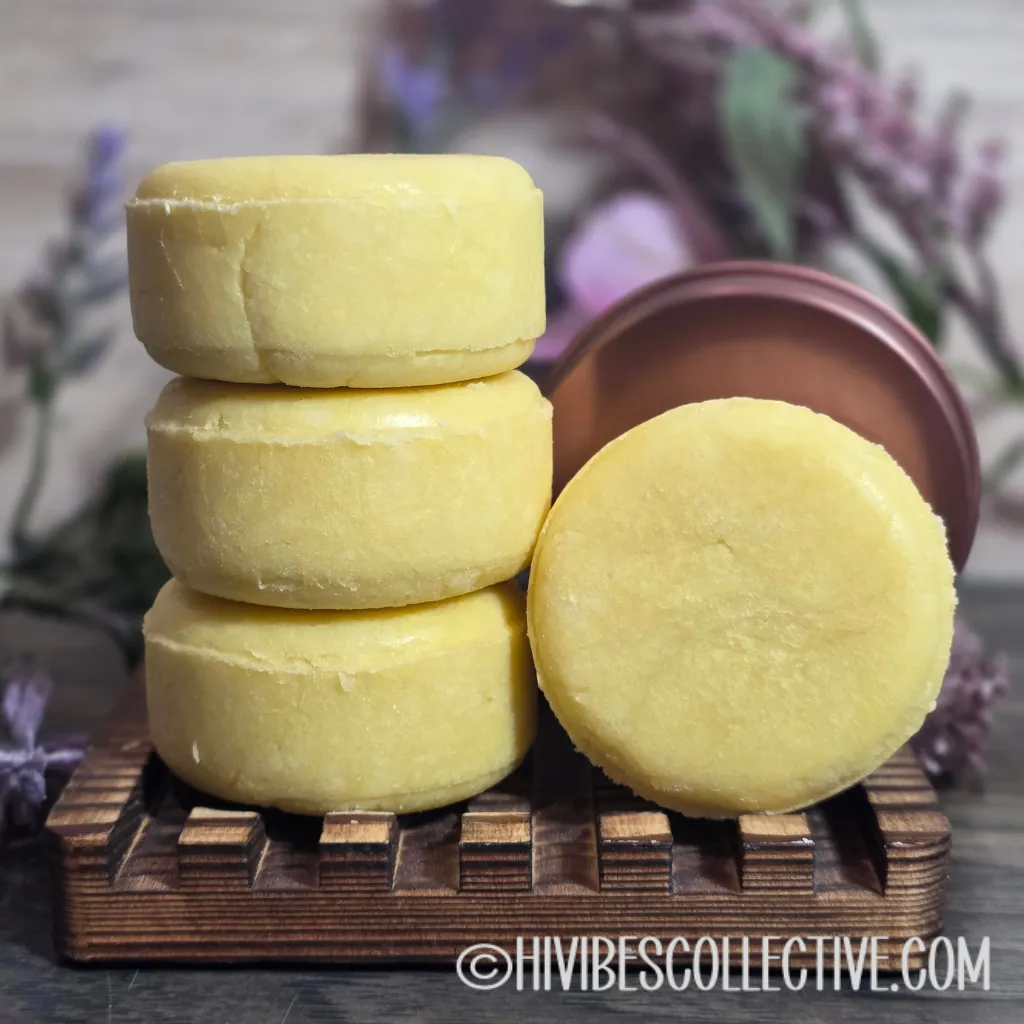Free Shipping for US Orders over $75
Butters, Oils & Lye
At HiVibes Collective, we believe that what goes on your skin matters. That’s why we carefully select each butter and oil, choosing only high-quality, skin-loving ingredients that bring something special to every bar of soap. From rich, creamy butters that add luxurious moisture to nourishing oils that cleanse gently without stripping, every ingredient serves a purpose—crafted to give your skin the care it deserves.
Due to labeling guidelines, we can’t make specific claims about the nourishing properties of our ingredients, but we encourage you to explore them for yourself! Nature is full of incredible benefits, and we’ve thoughtfully chosen ingredients known for their skin-friendly qualities. Whether you prefer something deeply moisturizing, extra cleansing, or perfectly balanced, we invite you to discover what works best for your skin and enjoy the simple luxury of truly handcrafted soap.
Olive Oil
Olive Oil: The Liquid Gold of Skincare
For centuries, olive oil has been a prized beauty secret, cherished by civilizations from the ancient Egyptians to the Greeks and Romans. This "liquid gold" comes from the humble olive tree (Olea europaea), native to the Mediterranean region, where its rich, nourishing properties have been celebrated for thousands of years.
In soapmaking, olive oil is a superstar. It creates a luxuriously gentle, creamy lather and produces a mild, conditioning bar that’s perfect for sensitive or dry skin. High in oleic acid, it deeply hydrates and softens while allowing the skin to breathe. Olive oil-based soaps, such as the legendary Castile soap, have stood the test of time for their simplicity and effectiveness.
For skincare, olive oil is a powerhouse of antioxidants, including vitamin E and polyphenols, which help fight free radicals and keep skin looking youthful. It’s naturally non-comedogenic (rated around 2 on the comedogenic scale), meaning it’s unlikely to clog pores, making it a great choice for most skin types. However, it’s particularly beloved for dry and mature skin due to its intense moisturizing abilities. While olive oil is widely available and relatively affordable, the highest-quality, cold-pressed extra virgin varieties come at a premium—so if you see it featured in a product, know that your skin is getting the very best!
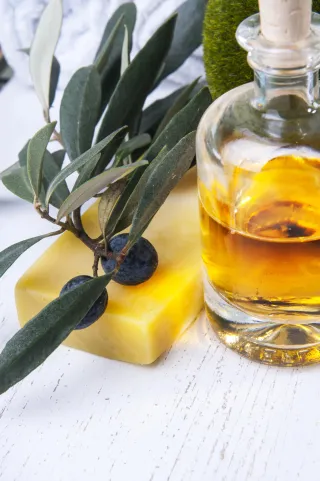
Coconut Oil
Coconut Oil: The Tropical Treasure for Skin & Suds
Harvested from the lush palms of tropical regions, coconut oil (Cocos nucifera) has been a beauty and wellness staple for centuries. Ancient cultures in the Pacific Islands and Southeast Asia revered it for its ability to nourish skin and hair, and today, it remains one of the most versatile and beloved oils in skincare. Extracted from the white flesh of the coconut, this rich oil is packed with skin-loving fatty acids, particularly lauric acid, which has natural antibacterial and moisturizing properties.
In soapmaking, coconut oil is a game-changer. It creates a hard, long-lasting bar with an abundant, fluffy lather—even in hard water or saltwater! Unlike some moisturizing oils that can make a soap too soft, coconut oil strikes the perfect balance by cleansing deeply while still leaving skin feeling soft and refreshed. However, in high amounts, it can be quite cleansing—so it's often blended with other conditioning oils to maintain the perfect balance of cleansing and hydration.
For skincare, coconut oil is ultra-hydrating and locks in moisture like a dream, making it perfect for dry, flaky, or rough skin. It’s naturally antimicrobial and has a light, tropical scent that makes every skincare moment feel like a mini vacation. However, it has a higher comedogenic rating (around 4), meaning it may clog pores for acne-prone skin—so while it's fantastic for the body, those with sensitive or oily facial skin may prefer lighter oils. Despite its tropical origins, coconut oil is widely available and affordable, making it a luxurious yet accessible ingredient in high-quality skincare and soaps.

Palm Oil - Sustainably Sourced
Sustainably Sourced Palm Oil: The Eco-Friendly Skin Protector
Palm oil (Elaeis guineensis) has been used for centuries, dating back to ancient Egyptian times when it was prized for its nourishing properties. Today, it remains a staple in skincare and soapmaking, but with a modern twist—sustainable sourcing. Ethically harvested palm oil, certified by organizations like the Roundtable on Sustainable Palm Oil (RSPO), ensures that this powerhouse ingredient is produced without deforestation or harm to wildlife, making it a responsible choice for both your skin and the planet.
In soapmaking, palm oil is a behind-the-scenes hero. It contributes to a firm, long-lasting bar with a rich, stable lather—creating the perfect balance between cleansing and conditioning. While coconut oil provides big bubbles, palm oil helps make them creamy and luxurious, enhancing the overall feel of the soap. It also adds a smooth texture and mild cleansing properties, making it a favorite in traditional and artisanal soap recipes.
For skincare, palm oil is loaded with skin-loving nutrients, including vitamins A and E, which help support skin elasticity and combat signs of aging. It’s non-comedogenic (rated around 2), meaning it moisturizes without clogging pores, making it suitable for most skin types. Sustainably sourced palm oil can be a bit pricier than conventional options due to ethical harvesting practices, but the investment supports rainforest conservation and fair-trade farming—so when you see it in your products, you know you’re getting quality without compromise!
Jojoba Oil
Jojoba Oil: The Liquid Gold of the Desert
Jojoba oil (Simmondsia chinensis) isn’t actually an oil—it’s a liquid wax ester, making it uniquely similar to the skin’s own natural sebum. Native to the arid deserts of the southwestern U.S. and northern Mexico, jojoba has been cherished by Indigenous peoples for centuries as a remedy for dry skin, wounds, and hair care. Today, it’s a prized ingredient in skincare and soapmaking due to its unmatched ability to balance, protect, and deeply nourish the skin.
In soapmaking, jojoba oil is a luxurious addition, bringing an extra dose of conditioning and silkiness to the lather. Because it closely mimics the skin’s natural oils, it enhances a soap’s moisturizing properties, making it especially beneficial for dry or sensitive skin. While too precious to be used as a base oil, even a small amount can elevate a bar of soap, giving it a smooth, skin-loving finish.
For skincare, jojoba oil is a superstar. It’s non-comedogenic (rated around 2), meaning it hydrates without clogging pores, making it perfect for all skin types, including acne-prone and oily skin. Packed with vitamin E and antioxidants, it helps soothe irritation, regulate oil production, and protect against environmental stressors. Since jojoba oil is slow to oxidize, it has an incredibly long shelf life—another reason why it’s a favorite in high-end skincare. However, its rarity and labor-intensive extraction process make it one of the more expensive oils on the market, so when you find it in a product, know that your skin is getting a truly premium treat!
Shea Butter
Shea Butter: The Velvety Skin Superfood
Shea butter (Butyrospermum parkii or Vitellaria paradoxa) is like a comforting hug for your skin. Harvested from the nuts of the shea tree, which grows in the African savanna, this rich, creamy butter has been used for centuries—if not millennia—by African communities to protect and nourish skin and hair. Traditionally, it was applied to shield against the harsh sun and dry winds, and today, it remains one of the most beloved ingredients in natural skincare.
In soapmaking, shea butter is a luxurious addition that transforms a bar into a deeply moisturizing experience. It contributes to a smooth, conditioning lather and helps create a firm, long-lasting soap. Unlike some oils that can be overly cleansing, shea butter ensures that your skin feels soft and supple after washing, rather than stripped of its natural moisture.
For skincare, shea butter is a powerhouse of vitamins A and E, along with essential fatty acids that deeply hydrate, soothe irritation, and promote skin elasticity. It’s non-comedogenic (rated around 0-1), meaning it won’t clog pores, making it suitable for all skin types, including sensitive and acne-prone skin. Because of its ultra-nourishing properties, it’s a go-to for dry, cracked skin, stretch marks, and even soothing minor burns or eczema. While shea butter is widely available, the highest-quality, unrefined versions—packed with all their natural benefits—can be more expensive, especially when ethically sourced from fair-trade cooperatives. But when you see shea butter in your skincare, know that you’re getting a rich, velvety indulgence your skin will thank you for!
Cocoa Butter
Cocoa Butter: The Decadent Skin Delight
If chocolate had a skincare soulmate, it would be cocoa butter (Theobroma cacao). Extracted from the rich, aromatic beans of the cacao tree—native to Central and South America—cocoa butter has been treasured for centuries. The ancient Mayans and Aztecs considered cacao a divine gift, using it not only as currency but also in sacred rituals and skincare. Today, cocoa butter remains a luxurious ingredient known for its velvety texture and deliciously subtle chocolate aroma.
In soapmaking, cocoa butter brings a touch of indulgence. It creates a hard, long-lasting bar with a creamy, conditioning lather, helping to lock in moisture while gently cleansing the skin. Unlike some oils that can feel greasy, cocoa butter absorbs beautifully, leaving skin feeling soft and nourished without a heavy residue. It’s especially loved in cold-process soaps for its ability to enhance the soap’s structure while adding extra skin-loving goodness.
For skincare, cocoa butter is a deeply moisturizing powerhouse, rich in fatty acids that help improve skin elasticity and lock in hydration. It’s a go-to for dry, sensitive, or mature skin and is famous for its ability to reduce the appearance of scars and stretch marks. With a non-comedogenic rating of about 4, it’s best suited for body care rather than facial use, especially for those prone to breakouts. While widely available, high-quality, raw cocoa butter—packed with all its natural antioxidants—can be more expensive due to the labor-intensive extraction process. But when you find it in your skincare, you know you’re treating your skin to a touch of pure, chocolatey luxury!

Sal Butter
Sal Butter: The Silky Secret of the Forest
Sal butter (Shorea robusta) might not be as famous as shea or cocoa butter, but it’s just as incredible—if not more! Derived from the seeds of the sal tree, which thrives in the dense forests of India and Nepal, this rich, creamy butter has been used for generations in Ayurvedic skincare. Known for its ability to deeply nourish and protect, sal butter is a hidden gem in natural skincare, offering a luxurious feel without a greasy finish.
In soapmaking, sal butter brings the best of both worlds—firmness and silkiness. It helps create a hard, long-lasting bar with a conditioning, creamy lather that leaves skin feeling soft and pampered. Unlike some butters that can feel heavy, sal butter has a lightweight, velvety texture that blends beautifully with other oils and butters, enhancing the overall feel of a handcrafted soap.
For skincare, sal butter is a dream come true. Packed with stearic and oleic acids, it provides deep hydration while helping to soothe dry, irritated, or sensitive skin. It’s non-comedogenic (rated around 0-2), making it a fantastic choice for all skin types, even those prone to breakouts. It absorbs quickly, leaving a smooth, satin-like finish that feels ultra-luxurious. While sal butter is less common than shea or cocoa butter, its rarity and labor-intensive extraction make it a premium ingredient—so when you see it in a product, know that you’re indulging in something truly special!
Grass-Fed Tallow (Beef Suet)
Tallow: The Timeless Skin Nourisher
Tallow has been a skincare staple for centuries, long before commercial lotions and creams existed. Traditionally rendered from the suet of grass-fed animals, tallow was cherished by our ancestors for its incredible ability to protect and nourish the skin. From ancient civilizations to homesteaders, this rich, deeply moisturizing fat has stood the test of time—and for good reason!
In soapmaking, tallow is a game-changer. It creates a hard, long-lasting bar with a luxurious, creamy lather that feels indulgent on the skin. Its unique fatty acid profile closely resembles our skin’s natural oils, making it ultra-conditioning and non-drying. Unlike some plant-based oils that can leave soap too soft or quick to dissolve, tallow provides the perfect balance of structure, lather, and moisture—resulting in a bar that is both gentle and effective.
For skincare, tallow is packed with skin-loving nutrients, including vitamins A, D, E, and K, along with essential fatty acids that deeply hydrate, soothe, and support skin regeneration. It’s naturally non-comedogenic (rated around 2), meaning it hydrates without clogging pores, making it suitable for most skin types. Grass-fed tallow, in particular, is rich in anti-inflammatory properties and antioxidants, making it a fantastic choice for sensitive or mature skin. While once a common household ingredient, high-quality, responsibly sourced tallow is now a rare gem in skincare—so when you find it in a product, know that your skin is getting a time-honored, nutrient-rich treat!

Lard (Pork Fat)
Lard: The Old-Fashioned Skin Softener
Lard (rendered pork fat) might sound like a throwback to the pioneer days, but don’t let its humble roots fool you—it’s an absolute treasure in skincare and soapmaking. For centuries, people have relied on lard for its deeply moisturizing properties, using it in everything from homemade balms to traditional cold-process soaps. In fact, before commercial beauty products took over, lard was a staple in natural skincare, prized for its ability to keep skin soft, smooth, and healthy.
In soapmaking, lard is an unsung hero. It creates a hard, long-lasting bar with a mild, creamy lather that feels silky on the skin. Unlike some oils that can strip moisture, lard-based soaps are incredibly gentle and conditioning, making them perfect for dry or sensitive skin. It also enhances a soap’s durability, helping it last longer in the shower—so every bar goes a little further.
For skincare, lard is loaded with beneficial fatty acids, including oleic acid (also found in olive oil), which helps nourish and repair the skin barrier. It’s non-comedogenic (rated around 2), meaning it moisturizes beautifully without clogging pores. Because it closely mimics the skin’s natural lipids, it absorbs easily, leaving behind a soft, velvety feel. While lard is often overlooked in modern skincare, high-quality, pasture-raised lard is making a comeback—offering an affordable, deeply nourishing, and sustainable option for those who appreciate the wisdom of traditional skincare. When you see it in a product, know that you’re experiencing a time-honored ingredient that truly pampers the skin!
Grapeseed Oil
Grapeseed Oil: The Lightweight Glow-Getter
Grapeseed oil (Vitis vinifera) is the ultimate skincare secret hiding in plain sight! A byproduct of winemaking, this golden-green oil is extracted from grape seeds after the juicy fruit has been pressed for wine. While the ancient Greeks and Romans valued grapes for their medicinal and culinary uses, grapeseed oil has only recently gained recognition as a skincare powerhouse. With its ultra-lightweight feel and impressive antioxidant content, it’s a must-have for those who love hydration without the heaviness.
In soapmaking, grapeseed oil adds a silky, conditioning touch that enhances the overall feel of a bar. Though it’s a softer oil that doesn’t contribute much to hardness, its high linoleic acid content helps create a gentle, moisturizing lather. Often used as a superfatting oil in cold-process soaps, it leaves behind a smooth, nourishing finish that makes skin feel refreshed and hydrated.
For skincare, grapeseed oil is a dream for all skin types. It’s non-comedogenic (rated around 1), meaning it absorbs quickly without clogging pores—perfect for oily, acne-prone, and combination skin. Packed with vitamin E, omega-6 fatty acids, and polyphenols, it helps brighten, soothe, and protect against environmental stressors. Plus, its naturally astringent properties help tighten and tone the skin, making it a fantastic choice for facial care. Since grapeseed oil is a byproduct of winemaking, it’s widely available and relatively affordable—so when you see it in a product, know you’re getting a lightweight, antioxidant-rich boost for glowing skin!
Castor Oil
Castor Oil: The Lather-Boosting Skin Soother
Castor oil (Ricinus communis) is a thick, glossy powerhouse with a history as rich as its texture. Extracted from the seeds of the castor plant, this oil has been used for centuries—dating back to ancient Egypt, where it was prized for its healing and beauty benefits. From Cleopatra’s eye treatments to traditional Ayurvedic remedies, castor oil has long been celebrated for its ability to nourish skin, promote hair growth, and even soothe aches and pains.
In soapmaking, castor oil is a lather lover’s dream! It has a unique ability to boost and stabilize bubbles, creating a rich, creamy, and luxurious foam that makes handmade soap feel extra indulgent. Because it’s highly humectant, it draws moisture into the skin, preventing soaps from feeling too drying. Though it’s a soft oil that works best when blended with harder oils and butters, even a small amount can make a big impact in creating a conditioning and bubbly bar.
For skincare, castor oil is deeply hydrating and packed with ricinoleic acid, a rare fatty acid with natural anti-inflammatory and antimicrobial properties. It’s often used to soothe dry, irritated, or acne-prone skin and is a go-to ingredient for oil cleansing, as it helps dissolve excess sebum while replenishing moisture. While its thick texture may feel too heavy for some, it’s surprisingly non-comedogenic (rated around 1), making it suitable for most skin types when used in moderation. High-quality, cold-pressed castor oil can be a little pricier due to the careful extraction process, but when you see it in a product, you know you’re getting an ultra-nourishing, lather-boosting treat!
Sweet Almond OIl
Sweet Almond Oil: The Gentle Skin Softener
Sweet almond oil (Prunus amygdalus dulcis) is a skincare classic, cherished for centuries for its ability to nourish, soften, and soothe the skin. Used by ancient Chinese, Ayurvedic, and Greco-Persian traditions, this light yet deeply moisturizing oil is pressed from the kernels of sweet almonds. Packed with vitamins and essential fatty acids, it’s a gentle, all-purpose oil that works wonders for all skin types.
In soapmaking, sweet almond oil enhances a bar’s conditioning properties, adding a silky, lightweight feel that keeps skin soft and hydrated. While it doesn’t contribute to a soap’s hardness, it’s often included as a superfatting oil, ensuring a luxuriously smooth and moisturizing lather. Its mild, hypoallergenic nature makes it especially great for gentle facial soaps and baby-friendly formulations.
For skincare, sweet almond oil is a dream. It’s rich in vitamin E, antioxidants, and oleic acid, helping to protect against dryness while keeping skin supple and glowing. It’s also known for its soothing properties, making it a favorite for calming irritation and even helping with dark circles and fine lines. With a non-comedogenic rating of about 2, it absorbs well without feeling greasy, making it a great choice for most skin types—especially dry and sensitive skin. Plus, it’s widely available and budget-friendly, meaning you get all the luxurious benefits without the high price tag! When you see it in a product, know that your skin is in for a gentle, nourishing treat.
Avocado Oil
Avocado Oil: The Ultra-Nourishing Skin Superfood
Avocado oil (Persea gratissima) is like a green goldmine for your skin! Pressed from the creamy flesh of ripe avocados, this rich, deeply moisturizing oil has been used for centuries—dating back to the Aztecs and Mayans, who prized it for its ability to nourish and protect the skin. Packed with skin-loving nutrients, avocado oil is a go-to ingredient for those looking to replenish, soothe, and soften their skin naturally.
In soapmaking, avocado oil adds a luxurious touch, boosting a bar’s conditioning properties and giving it a smooth, creamy lather. It’s particularly beneficial for dry or sensitive skin, as it helps to lock in moisture without feeling heavy. Because it contains a high percentage of oleic acid, it contributes to a softer, more hydrating soap that leaves skin feeling silky and pampered.
For skincare, avocado oil is a powerhouse. It’s loaded with vitamins A, D, and E, plus essential fatty acids that deeply nourish and help restore the skin barrier. Its anti-inflammatory properties make it an excellent choice for soothing irritation, redness, and even conditions like eczema. With a non-comedogenic rating of around 2-3, it’s best suited for dry, mature, or combination skin, as it provides intense hydration without clogging pores for most people. High-quality, cold-pressed avocado oil is rich in antioxidants and can be a little pricier than more common oils—but when you see it in a product, know that your skin is getting a deeply nourishing, nutrient-rich treat!
Canola OIl
Canola Oil: The Unsung Hero of Moisturizing Soaps
Canola oil is a lightweight, skin-conditioning oil that often flies under the radar in handcrafted skincare—but don’t let its simplicity fool you! Derived from the seeds of the canola plant (Brassica napus), this versatile oil is packed with omega-3 and omega-6 fatty acids, vitamin E, and antioxidants, making it a fantastic choice for nourishing and softening the skin. It has been used for centuries in cooking and skincare, particularly in regions where rapeseed oil (its close relative) has long been valued for its emollient properties.
In soapmaking, canola oil helps create a creamy, conditioning lather while preventing bars from becoming too hard or brittle. It slows down trace, making it great for intricate swirl designs, and it contributes a mild, silky feel to soaps. While it doesn’t provide the same bubbly lather as coconut or castor oil, it pairs beautifully with those high-lathering oils to create a balanced, moisturizing bar. It’s an affordable, accessible alternative to olive oil, often used in recipes as a cost-effective way to maintain a gentle, skin-loving formula.
For skincare, canola oil is non-comedogenic (rating of 2), meaning it’s unlikely to clog pores but is best suited for dry to normal skin types. Its lightweight texture absorbs easily, making it a great addition to lotions, creams, and body oils. With a high oleic acid content, it deeply hydrates and helps maintain the skin’s moisture barrier. It’s also a popular ingredient in massage oils, as it provides excellent slip without feeling greasy.
Best Uses: Creamy, conditioning bar soaps for soft, hydrated skin; lightweight lotions and body oils for dry skin; massage oils for a smooth glide without heavy residue.
Mango Butter
Mango Butter: The Silky-Smooth Skin Treat
Mango butter (Mangifera indica) is like a tropical vacation for your skin! Extracted from the kernels of the mango fruit, this butter is a hidden skincare gem, offering a rich yet lightweight texture that melts effortlessly into the skin. While mangos have been enjoyed for centuries as a sweet, juicy delight, their seeds hold a secret treasure—this ultra-nourishing butter that hydrates, soothes, and protects.
In soapmaking, mango butter adds a luxurious creaminess to each bar, boosting moisture and creating a rich, conditioning lather. Unlike some heavier butters, it has a soft, silky texture that blends beautifully with other oils, helping to create a smooth, long-lasting soap that feels indulgent on the skin. Its high content of stearic and oleic acids makes it fantastic for keeping skin soft and supple.
For skincare, mango butter is a dream for all skin types. It’s deeply hydrating yet non-greasy, with a non-comedogenic rating of 0-1, meaning it won’t clog pores. It’s packed with vitamins A and E, which help protect against environmental stressors and promote skin elasticity. Mango butter is also naturally soothing, making it a great choice for dry, irritated, or sensitive skin. While not as well-known as shea or cocoa butter, mango butter is becoming increasingly popular—and when you find it in a product, you’re getting a silky-smooth, nutrient-rich treat that your skin will love!
Kokum Butter
Kokum Butter: The Silky Smooth Skin Saver
Kokum butter (Garcinia indica) is a hidden gem in the world of skincare—ultra-rich yet incredibly lightweight, making it perfect for deeply nourishing without feeling greasy. Native to India, kokum butter is derived from the seeds of the kokum fruit, a tropical delight often used in traditional Ayurvedic medicine. Known for its ability to heal and restore, this butter is a favorite in skincare for those looking to soothe dryness, improve elasticity, and protect the skin’s natural barrier.
In soapmaking, kokum butter is a dream ingredient. It adds firmness to a bar while contributing a smooth, creamy lather that feels luxurious on the skin. Unlike heavier butters, kokum butter absorbs quickly, making it an excellent choice for those who want moisture without a heavy residue. Its high stearic and oleic acid content means it helps create a hard, long-lasting bar of soap that still feels wonderfully conditioning.
For skincare, kokum butter is a powerhouse of hydration and repair. It’s rich in essential fatty acids and antioxidants, making it an excellent choice for soothing sensitive or damaged skin. Unlike cocoa or shea butter, kokum butter is non-comedogenic (rated 0-1), meaning it won’t clog pores—perfect for face and body use. It’s also prized for its ability to support collagen production, making it a great addition to anti-aging formulas. Because it’s less common than shea or cocoa butter and requires a careful extraction process, kokum butter is considered a premium ingredient. When you see it in a product, know that you’re experiencing one of nature’s most nourishing and fast-absorbing butters!
Sodium Hydroxide (Lye)
Sodium Hydroxide: The Magical (But Necessary) Soap Starter
Sodium hydroxide, also known as lye, is the unsung hero of handcrafted soapmaking. It may sound a bit intense—after all, it’s a strong alkaline substance—but without it, you wouldn’t have soap. That’s right! No lye, no soap.
So, how does this work? Let’s break it down:
The Science of Suds: Saponification
When you mix sodium hydroxide with oils or fats, something magical happens—saponification. This is the process where the lye breaks down the fats and transforms them into two things: soap (the cleansing, skin-loving part) and glycerin (a naturally moisturizing byproduct). At first, the mixture is just a thick batter, but as the reaction continues, the oils and lye completely merge, and over time, the lye disappears. Yes, you read that right—once saponification is complete, there’s no lye left in the final soap. What remains is a perfectly balanced bar that cleanses without being harsh.
Is There Lye in Finished Soap?
Nope! Once the curing process is finished, all the sodium hydroxide has done its job and is completely gone. The soap is now a beautiful, skin-loving creation, full of creamy lather and gentle cleansing power. Think of lye like a caterpillar: at first, it’s something completely different, but through the transformation process, it becomes something entirely new—a beautiful bar of soap!
Why Can’t We Just Skip the Lye?
If you see a "lye-free" soap, it's likely not true soap at all—it’s probably a detergent-based cleanser. Handmade soapmakers embrace lye because it allows them to craft bars packed with natural butters and oils, without the harsh ingredients found in commercial products. So next time you use a handmade bar of soap, remember—it started with lye, but thanks to the magic of chemistry, what you’re holding is pure, skin-loving goodness!
HiVibes Collective
Handcrafted tallow soap & skincare using the very best local or authentically sourced ingredients.
Woods Cross, Utah, 84087
Handcrafted Hair & Skincare
©2025 HiVibes Collective • *Orgonite(TM) is a trademark of its respective owners.

